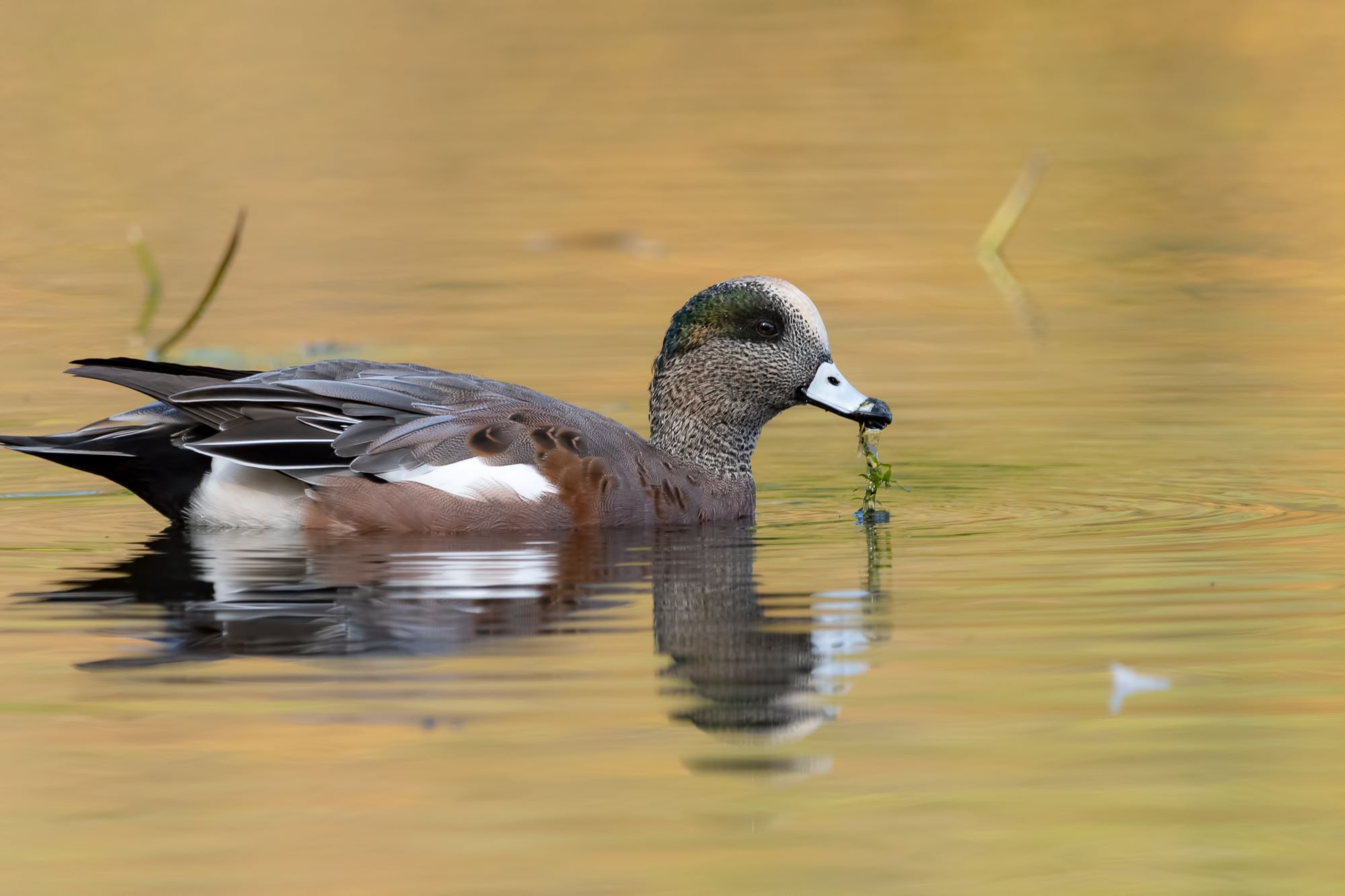
Dabbling Ducks in Utah
Dabbling ducks, a group of waterfowl commonly found in Utah's wetlands, lakes, and rivers, are an integral part of the state's rich avian biodiversity. These ducks are characterized by their unique feeding behavior; unlike diving ducks that submerge completely, dabblers feed by tipping forward into the water to graze on vegetation, invertebrates, and small fish near the surface. This distinctive habit makes them easily recognizable, even from a distance. Among the most common species of dabbling ducks in Utah are the Mallard, Northern Pintail, and American Wigeon. The Mallard, with its iridescent green head in males and mottled brown plumage in females, is perhaps the most recognized and widely distributed duck in North America. They are highly adaptable and can be found in almost any waterway across Utah, from small ponds to large lakes.
The Northern Pintail is another elegant dabbling duck species that graces Utah's waters. These ducks are known for their slender bodies and long, pointed tails, features most pronounced in males. Male pintails also exhibit a striking color pattern with a white breast, chocolate brown head, and white stripe running down the neck. Female pintails, like many female ducks, have more subdued plumage, which provides excellent camouflage among marsh vegetation. Northern Pintails are migratory and typically visit Utah during the winter, frequenting marshes and shallow lakes where they feed in open waters.
American Wigeons are also common in Utah, especially during the migration seasons. These medium-sized ducks are distinguished by their short bill and round head. Male wigeons have a unique white patch on their forewing, a green stripe on the head, and a creamy beige body, while females are generally gray-brown with a distinctive smudgy face pattern. American Wigeons are often seen in mixed flocks with other dabbling ducks. They prefer shallow marshes and ponds, where they often feed on aquatic plants by grazing at the water's surface or on nearby grasslands.
In addition to these species, Utah's waterways also host other dabblers like the Gadwall, Green-winged Teal, and Cinnamon Teal. Gadwalls are understated in appearance, with males sporting a subtle pattern of brown and gray and females dressed in mottled brown, but they are admired for their graceful demeanor. Green-winged Teals, the smallest dabbling ducks in North America, are identifiable by the striking green patch on their wings and, in males, a chestnut head with a green eye patch. Cinnamon Teals, predominantly found in the western U.S., are notable for the males' striking cinnamon-red plumage during the breeding season.
These dabbling ducks not only add to the ecological diversity of Utah's aquatic ecosystems but also contribute to the state's appeal as a destination for birdwatchers and nature enthusiasts. The presence of these ducks indicates healthy, functioning wetland ecosystems, crucial for water filtration, flood control, and providing habitats for a multitude of species. Conservation efforts in Utah, such as wetland restoration and protection, are vital for the continued survival and prosperity of these dabbling ducks. These efforts ensure that Utah's wetlands continue to be a haven for these fascinating and important species, maintaining the ecological balance and offering future generations the joy of observing these birds in their natural habitats.